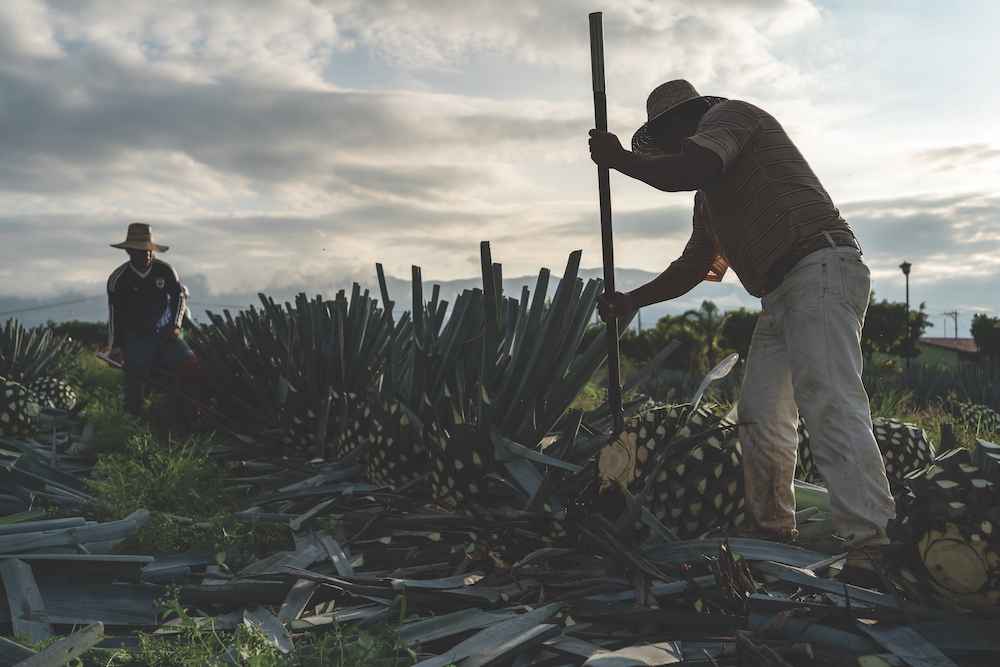
A surge in demand for Mexican agave spirits is seeing corners cut in production. Other countries can share the load, says Kol’s Matthias Ingelmann
When we think of agave spirits, we think tequila and mezcal. But really agave spirits are first and foremost spirits made from the agave plant. There is no geographic stipulation.
Agaves – plants loosely related to asparagus – are native to the Americas, particularly Mexico and the south west of the United States. They have grown there for millennia, with records dating back to 6,000-7,000BC. The last few centuries however, have seen their rapid expansion across the globe. With the forces of mercantilism, colonialism, increased global trade and interconnectivity, agaves have been introduced to countries the world over. In fact, agaves can now be found on six out of seven continents – they don’t thrive on Antarctica. You can almost draw an agave belt around the globe, tracing their incredible ability to adapt and thrive in arid and semi-arid conditions.
The process of planting agaves across the world began in the 18th century. In the early days this was mostly for ornamental reasons, but people quickly realised the multiple qualities of agave, with their fibres becoming widely used in textile production.
It was only in the mid-to-late 20th century that we saw the agave spirits industry begin to expand. Come the 21st century the market doubled from 255 million litres in 2013 to 510 million litres in 2023. This growth, of course, has come ostensibly from one country, Mexico, putting pressure on the raw material – theoretically agaves take a minimum of six years to reach maturity. This is compounded by the fact that the lion’s share of this volume is tequila, and therefore comes almost entirely from the state of Jalisco. A state smaller than Scotland, the impact of such growth on the local environment has been highly detrimental. For comparison, the whole scotch whisky production totals 700 million litres, but only a small amount of the grains required are actually grown in Scotland. Given the strains placed on Jalisco, and the ever-increasing demand, it is only a matter of time until more countries venture into agave spirit production.
Boom countries
One country leading the charge is Australia. Since the early 2000s, more and more small plantations have been established, with the climate and terroir in areas such as Queensland and New South Wales being almost destined for agave spirit production. Similarly, in South Africa we are seeing a boom for the same reasons, with dry and warm conditions, like those found in Mexico, plentiful in the areas around the Western and Northern Cape.
We also see more and more agave growing in Europe. These are, of course, not even close to full agave plantations, but in the south of Italy, Spain, Portugal and France we can see agaves popping up everywhere. On the Canary Islands, there are quite a few producers who are experimenting with some local spirit alternatives to mezcal and tequila. Even here in the UK you might find the odd agave. If you have ever visited St Michael’s Mount in Cornwall then you may have seen a massive 45-year-old agave americana, which recently flowered and spread her seeds.

The biggest challenge for those countries – and brands interested in investing in the market – is the time it takes for agaves to reach maturity, the knowledge that has to be acquired, and the lack of experience in cultivating this unique plant. The agave we mostly see growing outside of Mexico are agave americana and agave tequilana (Blue Weber agave), but we hear more and more stories about producers experimenting with diff erent agaves. For example, one producer just told us about planting agave salmiana in Australia.
I think we can look to a very promising future where agave spirits are not just limited to Mexico but are produced all over the world. There might be some people who argue against this and believe that agave spirits should be contained to Mexico – for myriad social, cultural, and economic reasons – but we can already see the marked environmental impact that the growing demand has on the local ecosystem in Mexico, particularly Jalisco. Likewise, this concentrated growth is impacting quality, with more and more brands using unripe and unhealthy agaves to be able to fuel the growing market. Sadly, the quality of tequila and mezcal is slowly but surely decreasing. We won’t be able to stop the growing demand, so I believe a much better solution is to spread the volume and, in the long run, give Mexican producers the chance to do what they do best: produce agave spirits of the highest quality.
If you’re looking to sample some of the pioneering agave spirits to be found outside of Mexico, then I would suggest:
Ecuador
Chawar Miske blanco: Chawar is a miske, a cousin of mezcal and tequila and distilled from the sap of agave americana, grown in the Ecuadorian Andes. Miske has been produced since 1970 and has been more popular since the 2010s.
South Africa
4th Rabbit Agave Spirit: This is made from agave americana, which is locally know as Karoo agave. The agaves grow in the Karoo desert north of Cape Town and the spirit is produced by Adi Badenhorst, a minimal intervention winemaker.
Australia
Black Snake Distillery Pechuga: This very interesting product hails from New South Wales, is based on agave americana and then distilled with kangaroo meat. Unique and made with a local twist.
Germany
Selva Negra: An agave spirit made from the organic extract of agave salmiana which has been imported from Mexico. A creative and different take on how to make agave spirits outside of Mexico.


